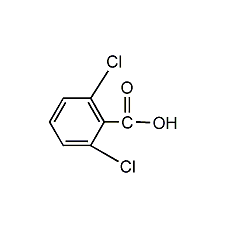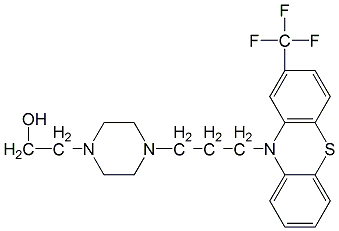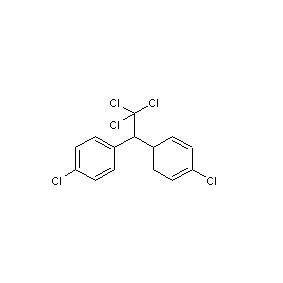
Structural formula
| Business number | 013G |
|---|---|
| Molecular formula | C7H4Cl2O2 |
| Molecular weight | 191.01 |
| label |
2,6-Dichlorobenzoic acid, 2,6-Dichlorobenzoic acid, Cl2C6H3CO2H |
Numbering system
CAS number:50-30-6
MDL number:MFCD00002418
EINECS number:200-025-9
RTECS number:DG7000000
BRN number:973858
PubChem number:24893961
Physical property data
1. Properties: White to slightly yellow powder or needle-like crystals
2. Density (g/mL, 25/4?): Undetermined
3. Relative steam Density (g/mL, air=1): Undetermined
4. Melting point (ºC): 144°C (lit.)
5. Boiling point (ºC, normal pressure) : Undetermined
6. Boiling point (ºC, 5.2 kPa): Undetermined
7. Refractive index: Undetermined
8. Flash point (ºC) : Undetermined
9. Specific optical rotation (º): Undetermined
10. Autoignition point or ignition temperature (ºC): Undetermined
11 . Vapor pressure (kPa, 25 ºC): Not determined
12. Saturation vapor pressure (kPa, 60 ºC): Not determined
13. Heat of combustion (KJ/mol): Undetermined
14. Critical temperature (ºC): Undetermined
15. Critical pressure (KPa): Undetermined
16. Oil and water (octanol/ Log value of the distribution coefficient (water): Undetermined
17. Explosion upper limit (%, V/V): Undetermined
18. Explosion lower limit (%, V/V): Undetermined
19. Solubility: Soluble in ethanol, ether, acetone, fluoroform. Water solubility 0.1-1 g/100 mL at 19 ºC
Toxicological data
1. Acute toxicity: mouse subcutaneous LD50: 1500mg/kg; mouse abdominal LD50: 316mg/kg
Ecological data
None
Molecular structure data
1. Molar refractive index: 42.97
2. Molar volume (cm3/mol): 125.8
3. Isotonic specific volume (90.2K ): 341.1
4. Surface tension (dyne/cm): 53.9
5. Polarizability (10-24cm3): 17.03
Compute chemical data
1. Hydrophobic parameter calculation reference value (XlogP): 2.2
2. Number of hydrogen bond donors: 1
3. Number of hydrogen bond acceptors: 2
4. Number of rotatable chemical bonds: 1
5. Number of tautomers:
6. Topological molecular polar surface area (TPSA): 37.3
7? Number of heavy atoms: 11
8, Surface charge: 0
9, Complexity: 151
10, Number of isotope atoms: 0
11. Determine the number of atomic stereocenters: 0
12. Uncertain number of atomic stereocenters: 0
13. Determine the number of chemical bond stereocenters: 0
14. Number of uncertain chemical bond stereocenters: 0
15. Number of covalent bond units: 1
Properties and stability
None
Storage method
This product should be sealed and stored in a dry place away from light.
Synthesis method
None
Purpose
Synthetic medicines and pesticides.
extended-reading:https://www.newtopchem.com/archives/44254extended-reading:https://www.bdmaee.net/wp-content/uploads/2021/05/1-8.jpgextended-reading:https://www.bdmaee.net/wp-content/uploads/2022/08/drier-butyl-tin-oxide-FASCAT-4101.pdfextended-reading:https://www.morpholine.org/category/morpholine/extended-reading:https://www.bdmaee.net/niax-sa-200-tertiary-amine-catalyst-momentive/extended-reading:https://www.bdmaee.net/wp-content/uploads/2022/08/Polyurethane-reaction-inhibitor-Y2300-polyurethane-reaction-inhibitor-reaction-inhibitor-Y2300.pdfextended-reading:https://www.bdmaee.net/wp-content/uploads/2021/05/2-2.jpgextended-reading:https://www.bdmaee.net/pc-cat-np109-low-odor-tertiary-amine-hard-foam-catalyst-nitro/extended-reading:https://www.newtopchem.com/archives/40016extended-reading:https://www.newtopchem.com/archives/677



